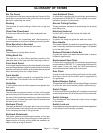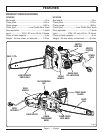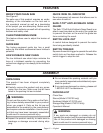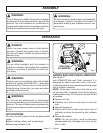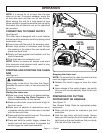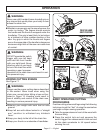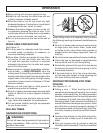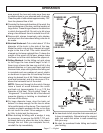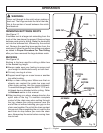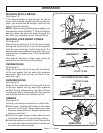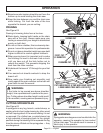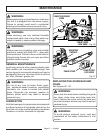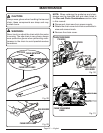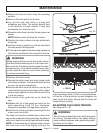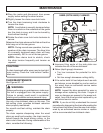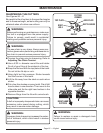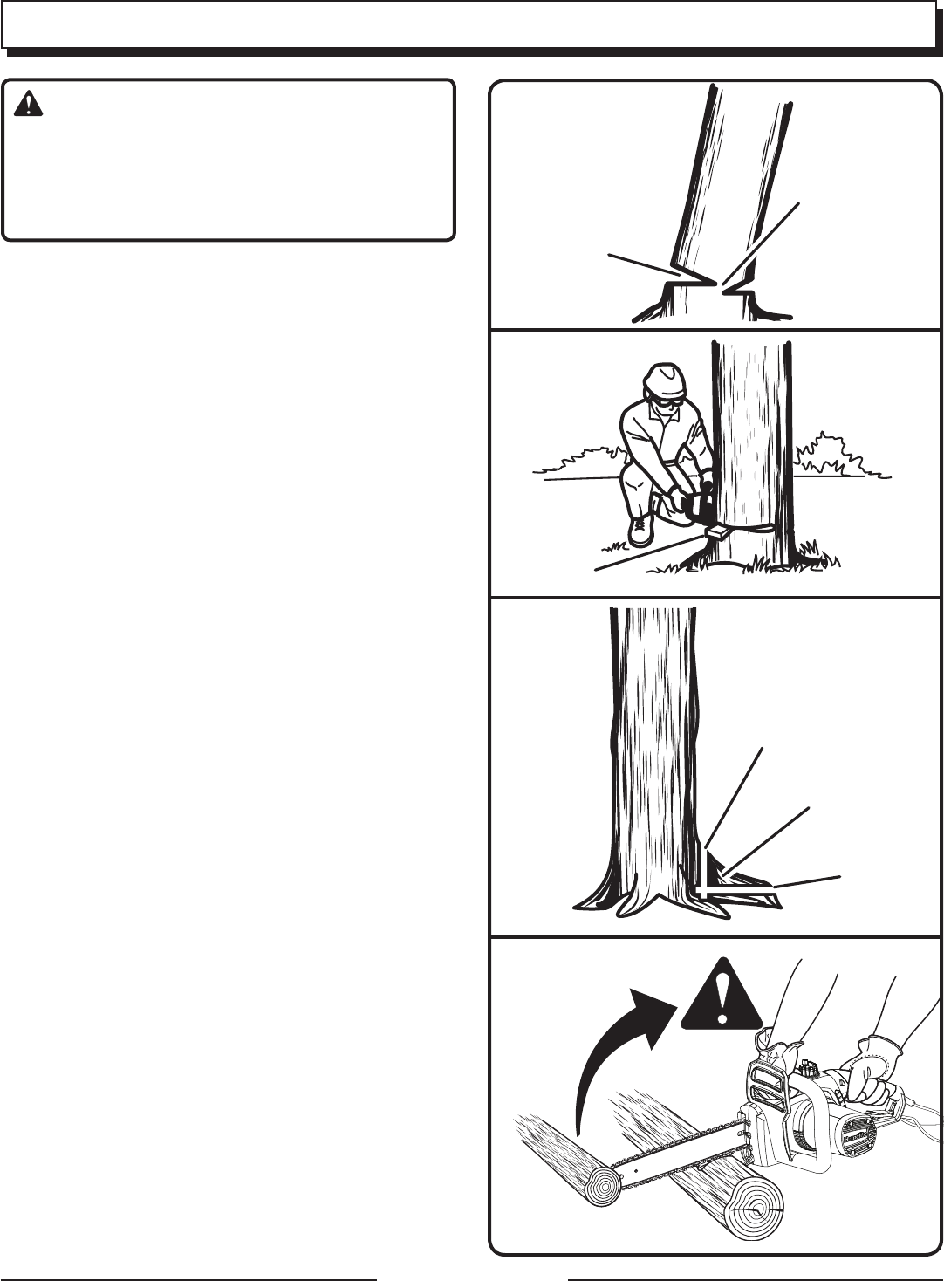
Page 18 — English
OPERATION
WARNING:
Never cut through to the notch when making a
back cut. The hinge controls the fall of the tree,
this is the section of wood between the notch
and backcut.
REMOVING BUTTRESS ROOTS
See Figure 17.
A buttress root is a large root extending from the
trunk of the tree above the ground. Remove large
buttress roots prior to felling. Make the horizontal
cut into the buttress first, followed by the vertical
cut. Remove the resulting loose section from the
work area. Follow the correct tree felling procedure
as stated in Proper Procedure For Tree Felling
after you have removed the large buttress roots.
BUCKING
See Figure 18.
Bucking is the term used for cutting a fallen tree
to the desired log length.
Always make sure your footing is secure and
your weight is distributed evenly on both feet.
Cut only one log at a time.
Support small logs on a saw horse or another
log while bucking.
Keep a clear cutting area. Make sure that no
objects can contact the guide bar nose and
chain during cutting, this can cause kickback.
To avoid the danger, keep the SAFE-T-TIP anti-
kickback device attached while cutting. Refer
to Kickback earlier in this manual.
When bucking on a slope, always stand on the
uphill side of the log. To maintain complete
control of the chain saw when cutting through
the log, release the cutting pressure near the
end of the cut without relaxing your grip on the
chain saw handles. Do not let the chain contact
the ground. After completing the cut, wait for the
saw chain to stop before you move the chain
saw. Always stop the motor before moving from
tree to tree.
WEDGE
Fig. 16
HORIZONTAL
CUT
VERTICAL
CUT
LOOSE
SECTION
Fig. 17
KICKBACK
Fig. 18
HINGE
BACK CUT
Fig. 15



